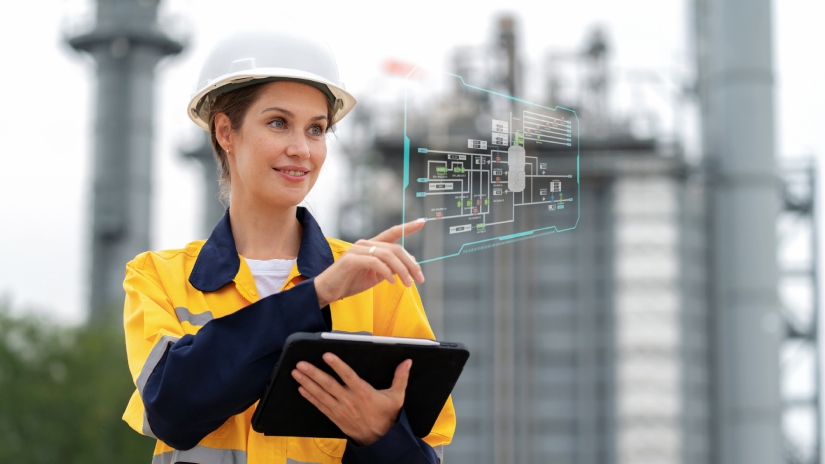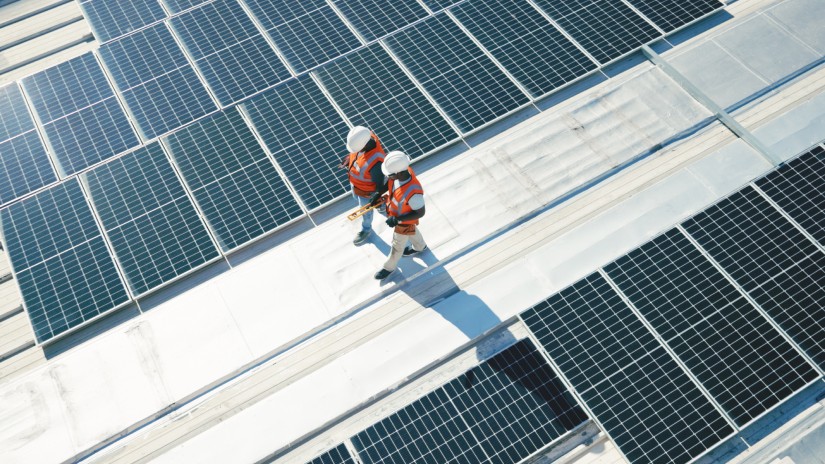By Kal Allam, Vice President & General Manager, Environment Business Division, Hitachi America, Ltd.
Businesses once had a stark decision to make when it came to energy use: should they strive to be sustainable or focus on resilience, growth, and profitability?
Thanks to technological advances and the emergence of new business models like “Energy as a Service,” we’re far removed from the era in which sustainability and reliability were viewed as being mutually exclusive. When companies think about replacing fossil fuel-based energy with renewable energy sources for infrastructure, they now have options.
Meanwhile, the global energy landscape is clearly ripe for change. Against the backdrop of mounting concerns about the impact of climate change, there’s more urgency to accelerate the shift to renewable and sustainable energy sources.
Indeed, forward-thinking regulators are helping to drive this transition by offering incentives such as those contained in the Inflation Reduction Act.1 They understand that if we can leverage renewable energy, energy storage and innovative financial solutions to make it easier for companies to adopt clean energy, it will lead to more sustainable and cost-effective solutions while ensuring grid resiliency – a win-win for all.
As with any great technology transformation, it takes time for the seeds of change to germinate – renewable energy is no different. In fact, the path towards a sustainable future started a long time ago. First-generation renewable technologies initially emerged during the Industrial Revolution (19th century), featuring hydropower, biomass combustion, and geothermal power and heat. By the 2000s, mass production, market competition and technological advancements contributed to an exponential drop in the cost of renewable energy production - and a corresponding exponential growth in their deployment.
This means we are now able to use new technology to meet the greater demands of electrification. For example, there are more electric vehicles (EVs) on the roads each year, including vehicles for personal use, as well as electric vans, buses, trucks, and fleets. Consequently, this growth in EVs puts more demand on the electric power grid and increases the threat of brownouts and blackouts during energy spikes or weather events that can create disruptions or take down energy infrastructure.
By utilizing Internet of Things (IoT) devices along with intelligent monitoring and management tools powered by artificial intelligence, we can more accurately predict grid conditions and energy requirements in buildings or factories. This approach, combined with battery energy storage systems that absorb renewable energy when it is plentiful and inexpensive and release it during times of high energy costs or unreliability, indicates a path toward a more sustainable and cost-efficient energy future.

The conventional paradigm of energy production and consumption features centralized power plants like nuclear or coal. They have served as the hub and spokes model where energy is generated in one location and then distributed to businesses and people through the electric grid. Today, there is a shift towards decentralized energy production, where power can be generated and stored locally or on-site until it is needed. This type of solution can be managed by sophisticated energy management solutions that are now available to regulate the various inputs into this infrastructure – renewable energy, energy storage, the grid, and other energy sources if necessary.
In this distributed architecture, there is more energy management at the nodes rather than at the central points of distribution. As intelligence moves out to the edge, organizations can effectively distribute energy as needed. This provides better control over the amount of energy coming in, being stored, and deployed, whether locally or into the community.
The shift towards distributed energy infrastructure also necessitates the deployment of new business models to help make the implementation feasible and cost-effective.
For example, Energy as a Service (EaaS) is a new type of business model that marks a shift from traditional models to a more flexible approach. With EaaS, consumers can pay only for the energy services or the utilization of the assets they use instead of investing in expensive capital assets or ownership of the infrastructure. It is also a model that enhances energy efficiency and promotes sustainability by offering customers multiple benefits without having to develop the expertise to run, maintain and operate these assets.

Breaking free from fossil fuel dependence is not a trivial exercise. It will require organizations to find ways to ensure the viability and reliability of large-scale infrastructure investments during this transition.
What’s more, there’s no “one size fits all” approach.
To achieve this energy transformation successfully, organizations will need partners who understand the impacts of both engineering and economics on their facilities, as well as have access to a robust partnership ecosystem to successfully deploy these solutions.
For Hitachi, a global leader in energy and digital technology solutions, this is familiar territory. As a top deployer of energy infrastructure and digital solutions, we have an extensive portfolio. Our Environment Business Division is dedicated to finding ways to help our customers successfully navigate this transition and get the most value possible out of energy as a service.
Hitachi can help.

Vice President & General Manager, Environment Business Division, Hitachi America, Ltd.
Mr. Allam is an executive leader with more than 20 years of experience spanning four continents with large global companies across multiple sectors including Energy/Infrastructure, Grid & Energy Storage, Digital industries, Enterprise Software, AI, & Cloud.
Mr. Allam joined Hitachi Energy (then ABB) in 2018, with responsibility for growing a portfolio of business for Utilities and Industries across Canada. In that role, he led sales, engineering and commercial operations teams to help customers modernize and maintain their grid infrastructure.
As General Manager of Hitachi’s Environment Business Division in North America, Kal is responsible for delivering growth across a portfolio of Hitachi’s environmental and sustainability solutions, by expanding markets, building new business models, and driving meaningful business and societal outcomes.
Prior to his role at Hitachi, Mr. Allam held key leadership roles at Cisco, GE Energy and Schneider Electric. He holds an MBA from the American University of Cairo, a Master of Science in Computer Science from the University of Louisville, Kentucky and a Bachelor of Science in Engineering from Ain Shams University, Egypt and is completing the Executive Leadership Program at Harvard Business School for Executive Education.